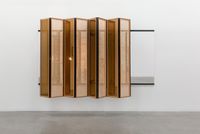
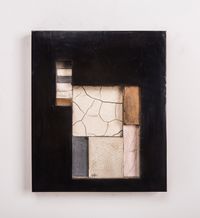
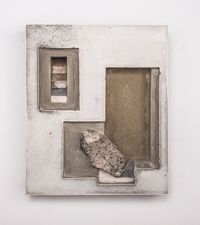
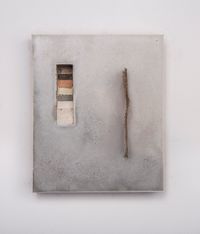
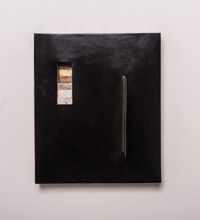
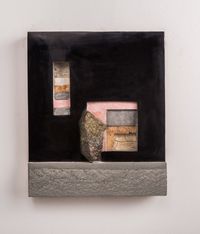
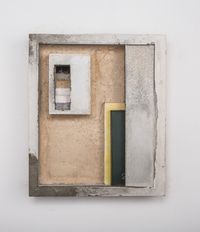
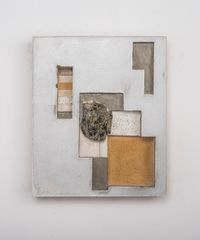
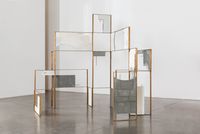
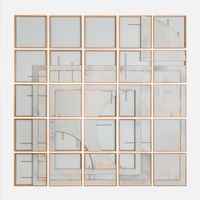
Boundary Space is Lima-based sculptor Ishmael Randall Weeks' (b. 1976) first solo exhibition in the Middle East. Made of adobe, mineral substrates, rattan screens, mud, glass and metal Randall Week's sculptures and two-dimensional works constitute a world that emerges from history and memory, navigating between the contemporary, the archaic, tradition and folklore. Interweaving Mesoamerican and Arabic motifs, anthropology, politics and archaeology, the artist also adopts industrial design nuances, where the influence of Russian Constructivism and Suprematicism (Vladimir Tatlin and Kasimir Malevich), the Neo-Concrete artists of Brazil (Hélio Oiticica and Lygia Clark), and Mexican Modernism movement (Matías Goeritz and Luis Barrangan) intertwine to open up a dialogue on structure, fragility, form, and popular culture within the creation of 'new' cities.
Exhibited together are wall-based, suspended and floor sculptures. Randall Weeks' floor sculptures respond to spatial relationships of the human body, linking individuality to collective group mentality. Chakana Penetrable, a hinged brass structure, is made from the repetition of simple geometric rectangles and squares based on the symbolic nature of the 'invented' Inca Cross mixed with a visual reference to Oiticica's Nucleos and Jean Baudrillard's Simulacra and Simulations. Ibeam/Toda las tierras (Ibeam/all the earths) is composed of three suspended I-beams in a single, head-high line made from fired earths from different pre-colonial ceremonial sites. Both evoke conversations about boundaries and their subsequent limitations.
Among Randall Weeks' wall-based works are Formas Básicas (basic forms), a large square composition comprising smaller squares that make up a mosaic, and the intimate Código atemporales (timeless codes). Made from Metallic grout, glass, steel and wood, Formas Básicas incorporates fundamental symbols and motifs drawn from the vocabulary of urbanism and architecture, its parts assembled in a fragmented manner that can be arranged or rearranged in a multitude of ways. The viewer is thus engaged in an open dialogue on issues of past modernity and possible futures. Randall Weeks' Código atemporales function like time capsules. Layers of collected soil and materials are laid down like sedimentary plates. Windows cut into these layers act as miniature excavations, and serve as a sculptural diary, with the time marked by patterns of materials collected from specific sites.
Press release courtesy Lawrie Shabibi.
Unit 21, Alserkal Avenue
Al-Quoz 1
Dubai
United Arab Emirates
www.lawrieshabibi.com
+971 4 346 9906
+971 4 346 9902 (Fax)
Monday – Saturday
10am – 6pm